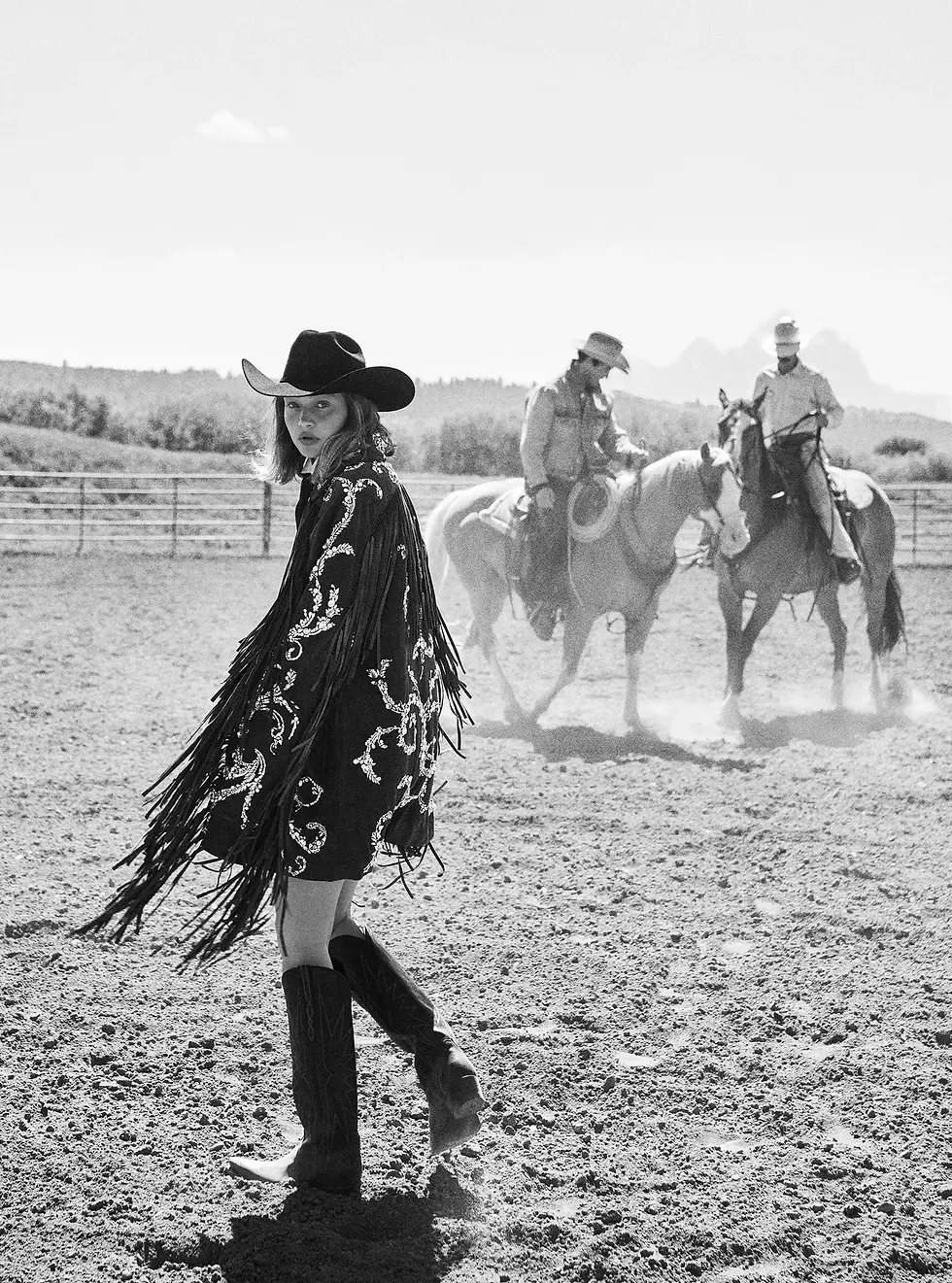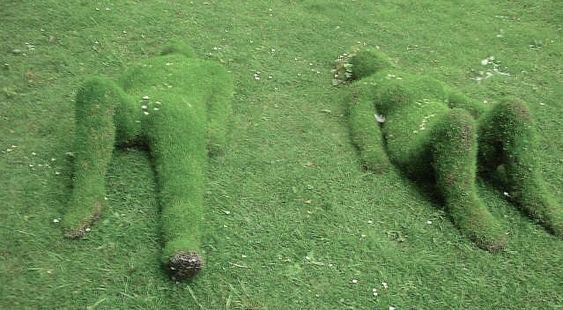Cowboy Boots and Blazers: The Politics of Fall 2025 Fashion
- Catherine Talbert
- Sep 22
- 4 min read
Autumn brings an amazing opportunity for fashion. The chillier weather allows us to layer more, showing off our favorite pieces before winter forces us to bundle up completely. Fall-Winter 2025 fashion trends seem to split in two directions:
On one end: bohemian, nomadic, Western. Think Chloé, suede, fringe, flowing blouses, embroidered jackets, and heavy belts. Vogue’s “Nomadic Spirit” describes long skirts, knits, and pendants — styling that nods toward freedom of movement and a romanticized American West. This is reflected in the newest October issue of Vogue featuring Kendall Jenner and Gigi Hadid.

On the other end: workwear and modern prep. Curved shapes, flared hemlines, cinched waists, tailored jackets. Sleek structure balanced with vintage nods. These looks signal ambition and discipline, reflecting the reality that, in a precarious economy, work dominates life and clothing adapts to professionalism.

And then there’s Ralph Lauren’s Fall 2025 collection, which seems to bridge the gap: Victorian drama meets British countryside, but with plenty of Americana still stitched in.

Fashion has long been tied to economics. The old “hemline index” posits that short skirts appear in prosperous times, longer skirts in economic downturns. According to my sister, “the return of peplum is the biggest recession indicator, if I’ve ever seen one.” I respect the practicality of workwear’s comeback. However, something about the contrast between sharp tailoring and free-flowing bohemian pieces trending at the same time makes me pause.

For me, these aesthetics clash. Prairie nostalgia versus office polish. Escapism and nature versus ambition and industry. One prepares us for the grind; the other lets us dream about riding away from it. And I can’t help but wonder if this contrast reflects more than just fashion cycles.
One theory could be that the “nomadic spirit” derived from Chemena Kamali’s Chloé is a direct opposition to day-to-day office life.
As I said, there’s a certain escapism in the romantic, flowy silhouettes. These pieces are beautiful and can make one feel liberated from the structure of tailoring. If we’re theorizing about fashion and society, perhaps it’s as simple as that: escape, an opposition to grind culture.
However, another theory feels darker. Maybe Vogue’s language is telling. “Nomadic Spirit.” “Country Coded.” Is “nomadic” truly a style, or is it a careless label? True nomads in this country were targeted in genocide. Cowboy aesthetics, meanwhile, have long been linked to nationalism, manifest destiny, and “real America” mythology.

At the same time, it’s worth noting that Kamali, the new creative director for Chloé, has described her vision for Chloé as an antidote to the pressure for women to be just one thing. In alignment with founder Gaby Aghion’s legacy, the brand continues its “Women Forward Partnerships,” which support women’s empowerment, gender equality, and inclusivity. Even the fur pictured is faux — an intentional step away from outdated traditions. So perhaps the revival of fringe and suede isn’t about nationalism at all, but about rewriting those aesthetics into something freer, more inclusive.
And so, I ask myself: Am I reading too deeply into this?
Because it’s not lost on me that I enjoy these styles too. I’ve never been on a horse, but I can appreciate a Ralph Lauren equestrian-chic, old-money Americana moment. I also love Chloé as a brand - I even wrote a blog last spring about their dreamy silhouettes. Just the other day, I saw a girl in fringe boots that instantly transported me back to 2010s Coachella. The truth is, most of us don’t stop to assign political or cultural weight to what we wear. Sometimes a boot is just a boot. Trends can mean everything, or nothing at all; they can be pure aesthetics, nostalgia, comfort, or even escapism. Still, if fashion really is a mirror of society, then it’s worth asking: if hemlines once hinted at the economy, what does the revival of American West motifs say about our current moment?
Why now? Why this obsession with rural nostalgia at a time when the nation feels politically fractured? Is fashion simply reviving horse-girl chic, or are these aesthetics surfacing because they resonate with a political undercurrent?
In a cultural moment marked by Sydney Sweeney’s “great genes” remark and the Trump-era eugenics rhetoric, the sudden embrace of Americana feels less innocent. Are we unintentionally reinforcing narratives?

And who truly has access to this supposed “escape”? It’s not hard to notice that it’s Gigi Hadid and Kendall Jenner riding horses in their downtime, or Bella Hadid trading runways for rodeos.
I don’t have the answers. Maybe this is all a coincidence, just the natural cycling of trends. Maybe “horse girl autumn” is simply harmless fun. But fashion doesn’t exist in a vacuum, and in 2025, its embrace of office discipline and Western nostalgia feels like more than just style. It feels like a mirror of our anxieties, our ambitions, and our politics.
_edited.png)



Comments